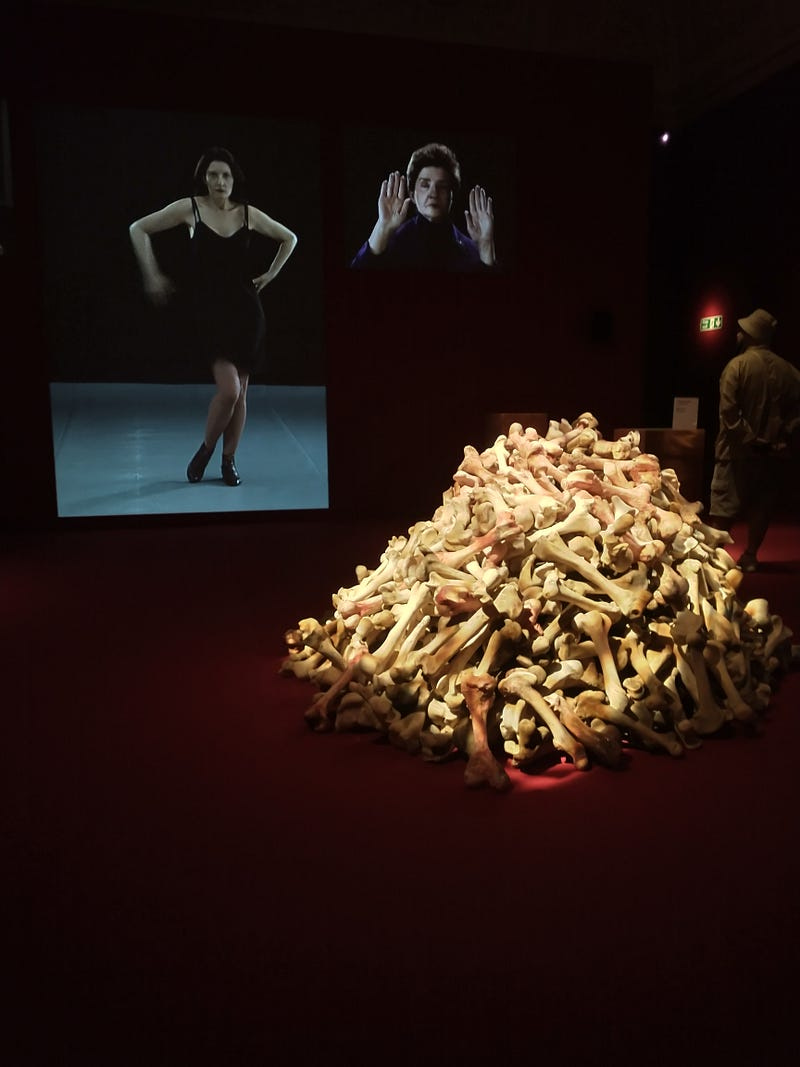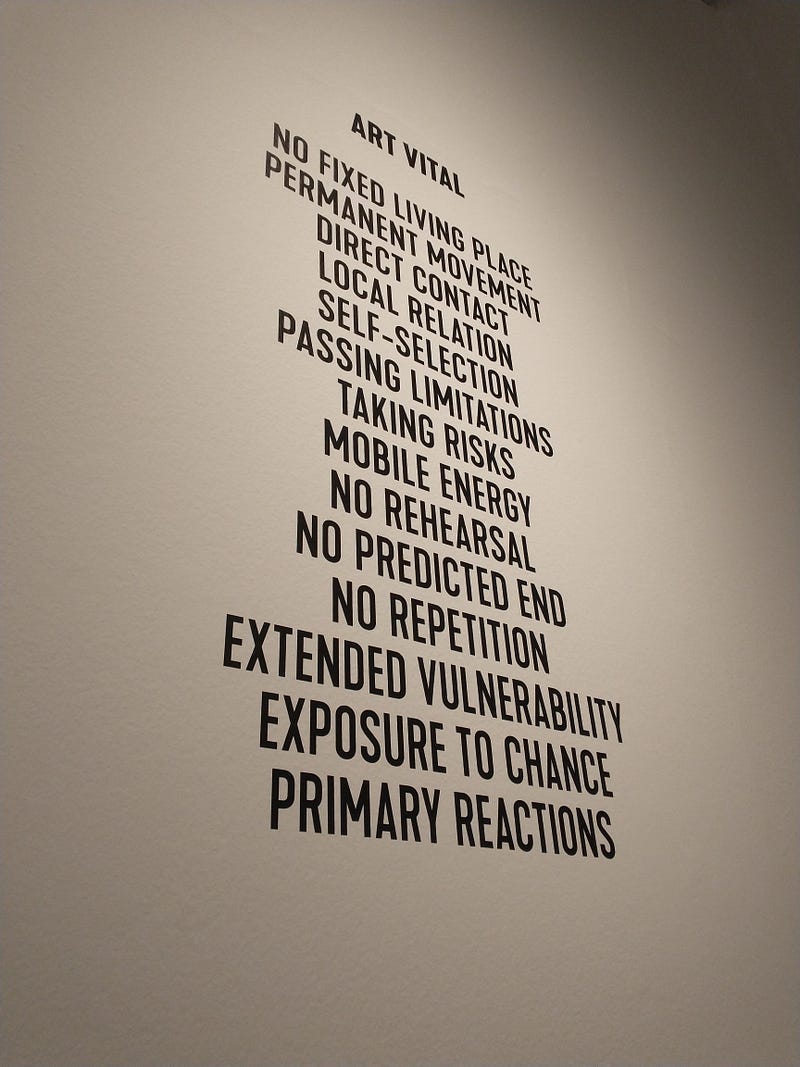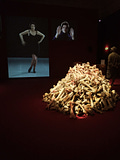“Long Live” Saint Marina
The retrospective exhibition of the life-work of performance artist Marina Abramović, at the Royal Academy of Arts (RAA), London, entitled…
“Long Live” Saint Marina

The retrospective exhibition of the life-work of performance artist Marina Abramović, at the Royal Academy of Arts (RAA), London, entitled “Marina Abramović” (September 23, 2023-January 1, 2024), sets in motion endless questions regarding what might best be called existentialist esoterism. The works shown, crossing at least 50 years, also place in high relief the nature of the emergence of Abramović’s life-work, across and through works, yet in a manner that suggests the artist is never quite there in any normative sense, given that the artist is also transfigured by the life-work, which is essentially transpersonal (in Tristan Tzara’s sense of the term).

The existentialist esoterism of Abramović’s exploration of works-based agency (primarily through, but not limited to performance) perhaps came to its fullest expression in an early, manifesto-like inscription, entitled “Art Vital” (1977), of the terms of engagement for her early performance-based works; works produced with or without her partner in crime for many years, fellow performance artist Ulay (Frank Uwe Laysiepen), technically co-author of the manifesto. Here we “see” in reduced form a type of radical mendicancy or itinerancy that places an emphasis on a semi-mystical or vitalist encounter with the tenets of ultra-contingency as often lived by mystics and/or those often denoted “saints” well after they have timed out; i.e., left this world behind, only to still inhabit this world through a secret backdoor in works and through whatever relics they may have left behind, inclusive of their physical remains. Such religious relics, as de facto works, are also — often enough — works of art. (The bones of Saint Francis of Assisi come to mind here, given their history of being moved from place to place, hidden, re-discovered, re-hidden, moved so as to renovate the tomb, inventoried, and re-interred across 800 years.)
The art-historical rationale or justification for such an argument for anything resembling existential esoterism is, however, circular. It gets caught up and then all but lost in games of authorial presences that are neither necessary nor complimentary when dealing with artists of such an order — e.g., artists bordering on being sainted by the art world such as to hyper-commodify their “back catalogue.” This is perhaps why the recurring credit to the Marina Abramović Archives was one of the more mysterious references in the otherwise conventional wall text in the RAA exhibition. “Mysterious” in this context connotes the presence of “what” Abramović has done with her work over the years, a body of work that was almost always made “for the camera,” and a body of work that she has now formally enclosed in an apparitional and “personal” archive (plus the Marina Abramović Institute) to perhaps protect it, insofar as many of the projects represented in the RAA exhibition pay homage to her not-so-secret collaborator otherwise known in performance art as “the audience,” and given the likely respect she harbors for the fact that there is so much prior art buried in her work that it would be reprehensible not to cede it back to the public domain from whence it came. Is she protecting her works from abject commodification? One hopes so. Is she establishing a collection and institute for the preservation of the “history” of her project, above and beyond the bespoke works? One would guess so. But what is she ultimately up to here other than playing against one of the most prominent tenets of existentialist esoterism and vitalism — viz., “dissipation.”
[…]
In 2023, Abramović was promoted to Commander of the Order of Arts and Letters in France.


